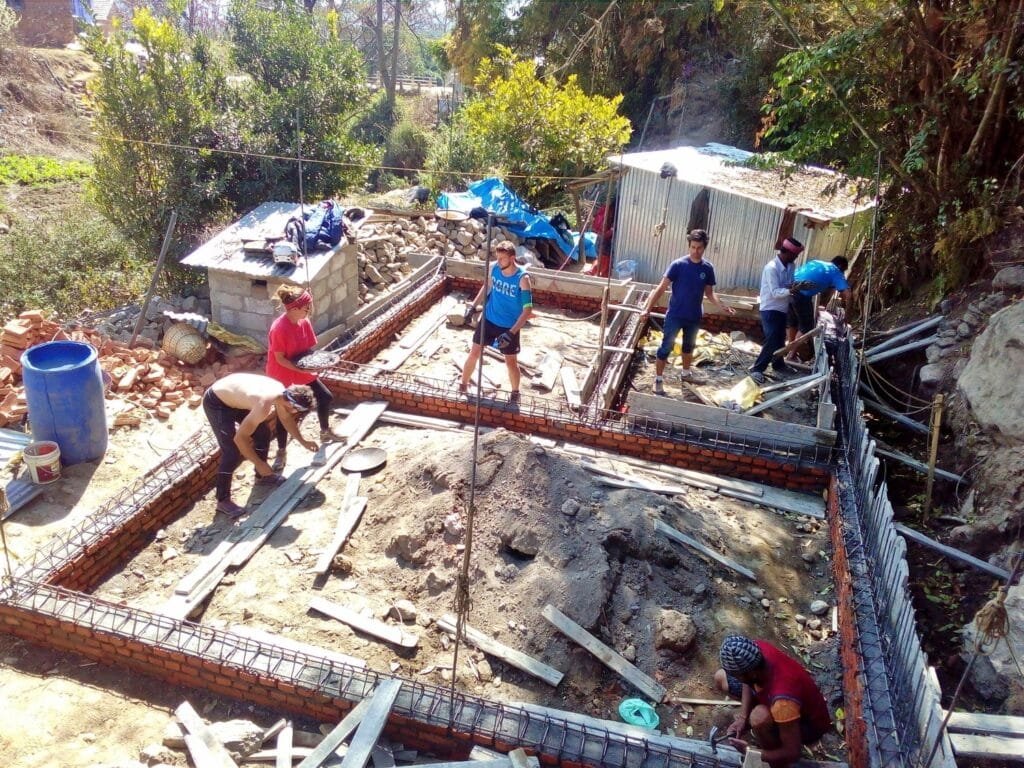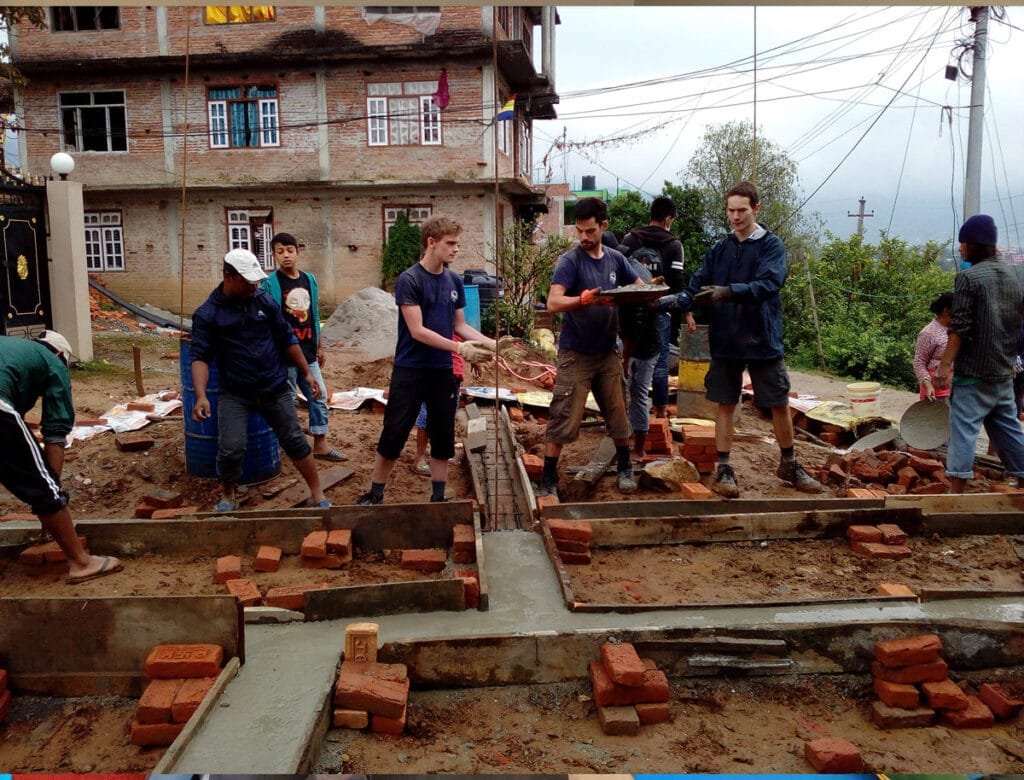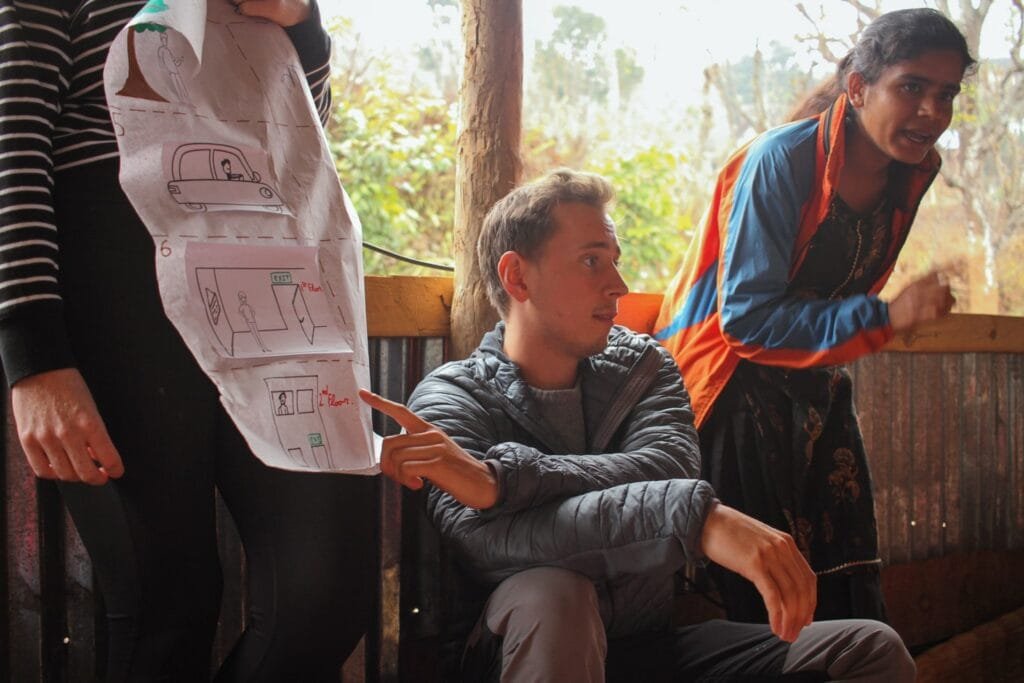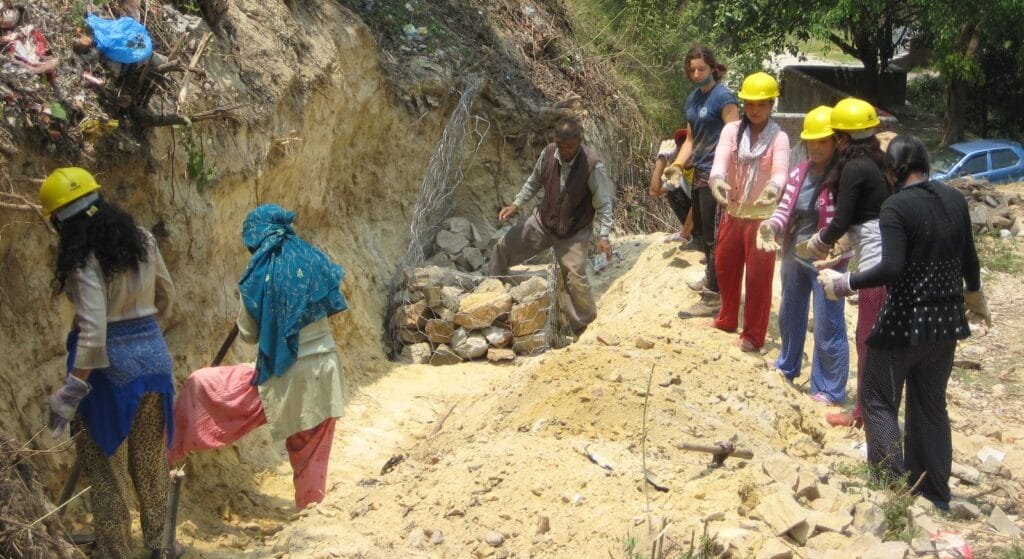Quick Highlights:
- Four core tracks: from Disaster Preparedness Volunteer Program Nepal to Disaster Risk Reduction Internship
- Grassroots approach: coordinating with local leaders, providing training, and collecting risk assessment data
- Ideal for students, professionals, or experienced crisis responders seeking to create a lasting impact
Introduction
Imagine trekking across Nepal’s rugged terrain to deliver emergency kits or leading a Disaster Preparedness Volunteer Program workshop that teaches village families how to react during floods or earthquakes. Perhaps you’d tackle data collection in a Disaster Risk Reduction Internship in Nepal, helping local authorities pinpoint hazards and plan safer infrastructure. These Disaster Risk Management Volunteer Opportunities fuse genuine humanitarian action with a unique cultural immersion. Each day, you’ll boost local readiness, refine crisis-management solutions, and foster resilience for thousands of at-risk Nepali citizens.
Urgency
The Urgency of Disaster Risk Management
1. Why Disaster Risk Management Volunteer Opportunities Matter
Nepal is globally renowned for its majestic Himalayas, but its steep valleys and tectonic volatility render communities vulnerable to earthquakes, landslides, and floods. According to the United Nations, Nepal ranks among the top 20 countries most at risk of multi-hazard disasters. Rural villagers, with limited resources, often face significant challenges in emergency preparedness and efficient crisis responses. That’s where Disaster Risk Management Volunteer Opportunities become critical: by sharing global knowledge and hands-on training, volunteers help communities become safer, more prepared, and quicker to recover.
Disaster Response Volunteer Opportunities assist right after an event, while Disaster Preparedness Volunteer Programs shape readiness before trouble strikes. Meanwhile, Disaster Risk Reduction Internship Nepal roles refine future interventions with data-backed solutions and policy recommendations. By offering your time and skill sets, you collaborate with local NGOs, government offices, and youth groups to establish long-term resilience strategies. The result? Fewer casualties, lower economic losses, and a more substantial community fabric.
2. Our Unique, Community-Centered Method
Some organizations orchestrate short-term “disaster tours” with minimal local engagement. Conversely, our approach invests in Emergency Management Volunteer Programs shaped by local insights. Perhaps you lead introductory triage sessions for teen scouts or facilitate a mock emergency drill with a village’s volunteer team. Volunteers aren’t merely “helpers”—they become knowledge sharers, working side-by-side with teachers, health workers, or local council members to embed best practices deeply into the community’s daily life. As a Disaster Risk Reduction Internship Nepal participant, you might co-author guidelines or risk maps, ensuring continuity and community ownership beyond your volunteer stint.
Explore Our Disaster Risk Management Volunteer Opportunities
We offer four distinct tracks. Each merges community-led goals with volunteer energy, whether you gravitate toward behind-the-scenes data analysis or on-the-ground emergency responses. You’ll amplify local resilience and glean valuable crisis-management experience by aligning to your strengths.
-
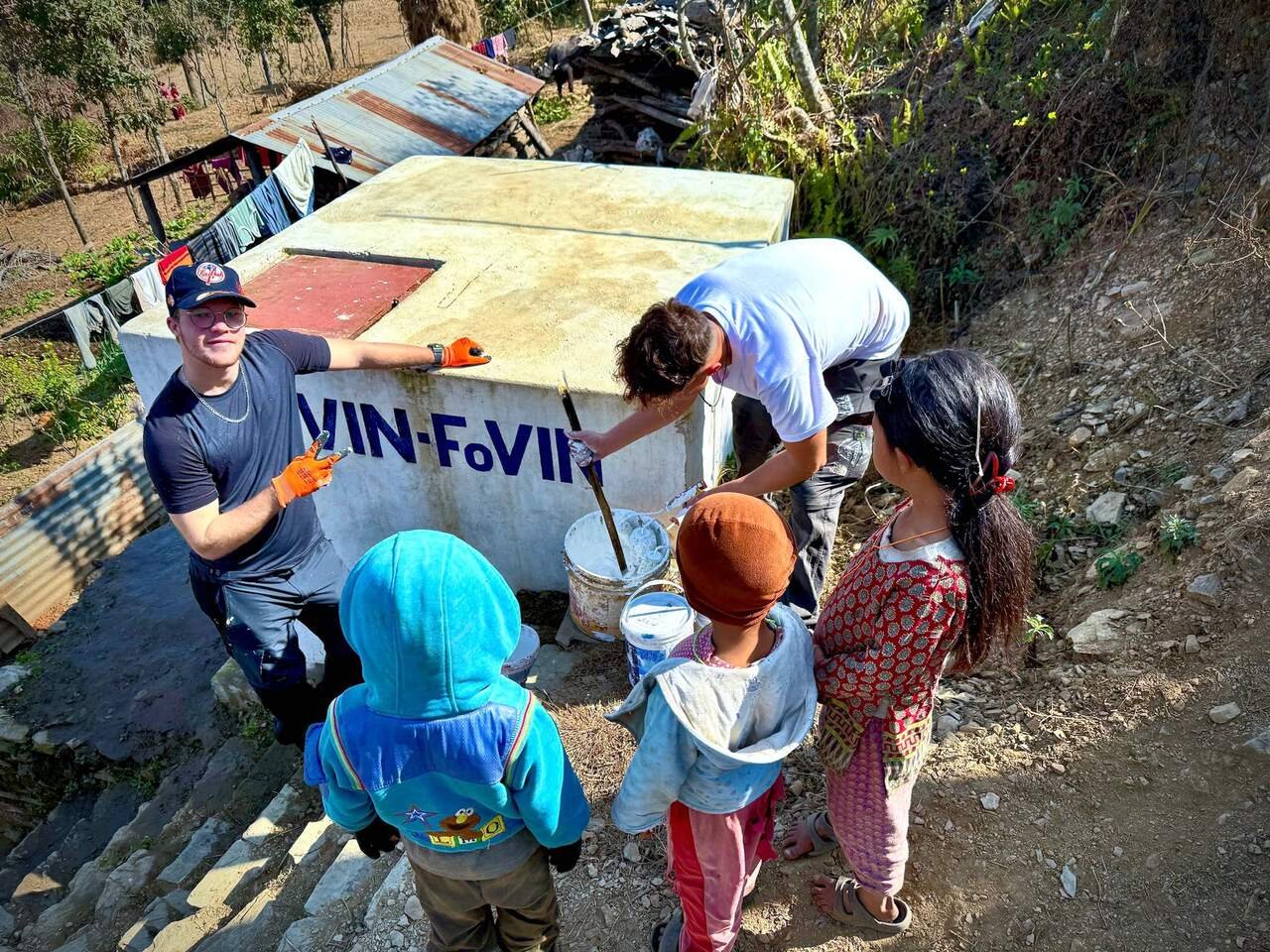
Disaster Risk Reduction Internship in Nepal
- Focus: Academic or professional internship focusing on data collection, risk assessment, and policy-level recommendations.
- Activities: Gather and analyze historical disaster records, run cost-benefit analyses for proposed mitigation projects, or produce reports guiding local councils.
- Why It Matters: Evidenced-based planning fosters sustainable improvements. You help shape long-term resilience strategies anchored in real-world data.
-

Disaster Response Volunteer Program in Nepal
- Focus: Rapidly assist communities post-disaster, bridging immediate gaps in rescue, medical support, or resource distribution.
- Activities: Deliver emergency kits, coordinate volunteer emergency services roles, clear debris, reunite families, or document damage for relief claims.
- Why It Matters: Swift, coordinated action in the aftermath of a crisis significantly curbs additional harm, secures lives, and preserves morale.
-
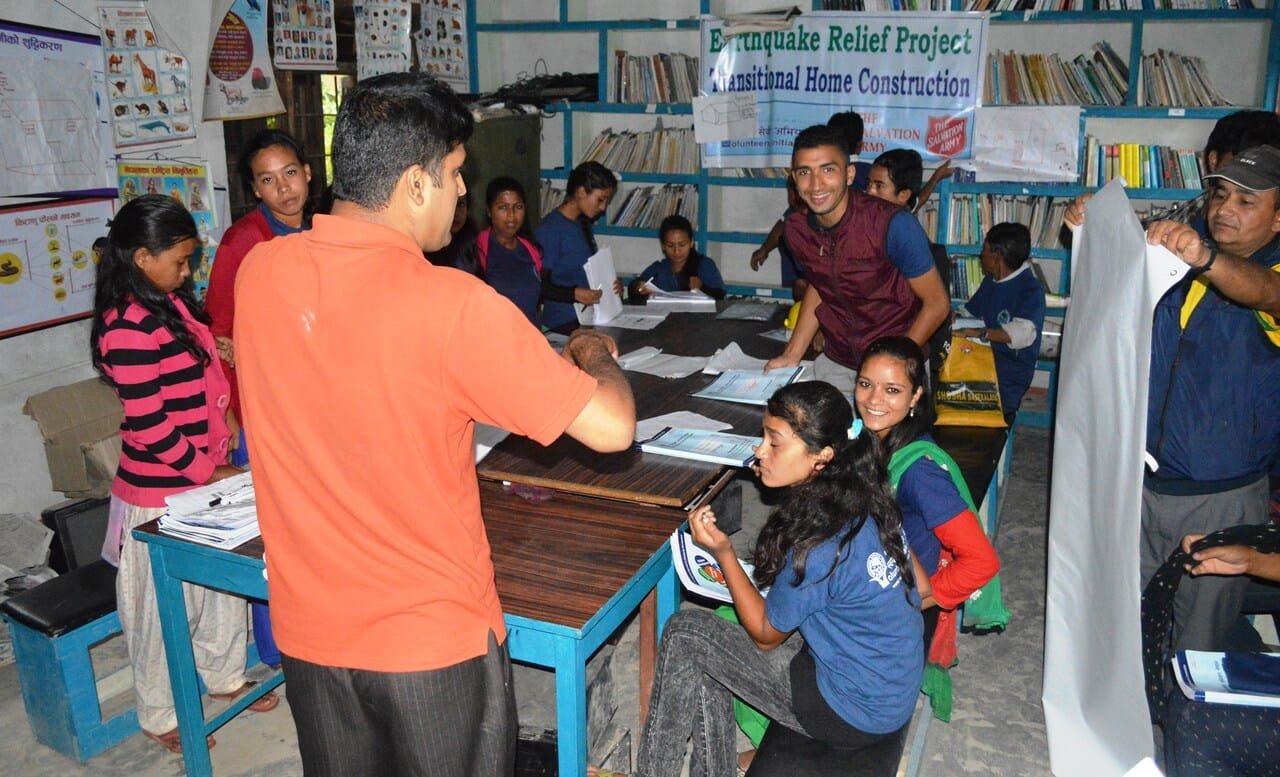
Disaster Risk Management Volunteer in Nepal
- Focus: Comprehensive approach to identify hazards, gauge vulnerabilities, and institute risk mitigation steps.
- Activities: Conduct hazard mapping for flood zones, collaborate with local leadership on land-use planning, or teach safer house construction techniques.
- Why It Matters: Systemic solutions reduce day-to-day anxieties and strengthen local governance and planning capacity.
-

Disaster Preparedness Volunteer Programs in Nepal
- Focus: Equips communities with essential knowledge, resources, and strategies to handle disasters—before they strike.
- Activities: Train families on safe evacuation routes, store emergency rations, develop community emergency phone trees, and run simulation drills.
- Why It Matters: Early preparedness slashes fatalities and property damage, ensuring communities bounce back swiftly from calamities.
Benefits
Benefits & Impact
1. For Volunteers
- Professional Skill-Building: Cultivate crisis communication, data analysis, or leadership skills—vital in any career involving complex problem-solving.
- Cultural Immersion: Live among Himalayan communities, forging lasting bonds as you champion safer living conditions.
- Personal Growth: Experience the fulfillment of safeguarding precious lives and traditions under threat from nature’s unpredictabilities.
2. For Nepali Communities
- Reduced Vulnerability: Prior-crisis access to training and resources diminishes casualties and accelerates rebuilding.
- More substantial Infrastructure: Volunteer guidance can shape better building codes, improved flood defenses, or more coordinated emergency networks.
- Empowered Youth & Leaders: Mentoring local leaders foster lasting resilience—beyond the project timeline—across future generations.
How It Works
How It Works: Application to Real-World Collaboration
1. Select & Apply
Find a track matching your skillset and passion: maybe a Disaster Preparedness Volunteer Program for pre-crisis planning or a Disaster Response Volunteer Opportunities role for direct post-event assistance. Please fill out our online application, specifying relevant experience or academic background.
2. Pre-Departure Guidance
Accepted volunteers receive orientation materials covering Nepali culture, local hazards, and humanitarian best practices. We’ll also share readings on successful crisis management volunteer projects from around the globe and discuss how your chosen focus—like Emergency Management Volunteer Programs—integrates with local goals.
3. Arrival & Training
Land in Nepal, get picked up by staff, then settle into a local volunteer house or homestay. You’ll undergo orientation: a deeper dive into hazard contexts, community structures, and daily tasks. If you’re in the Disaster Risk Reduction Internship Nepal, expect academic frameworks for data analysis or advanced project planning.
4. Project Engagement & Daily Routines
Dive into your tasks. Disaster Preparedness volunteers might run daily workshops, distribute checklists, or launch school awareness campaigns. Disaster Response folks could remain on standby for dispatch if a localized calamity arises. Meanwhile, Disaster Risk Management volunteers might join local councils to refine hazard maps and ensure every neighborhood has an updated emergency plan.
5. Completion & Legacy
Wrapping up, volunteers share results: the number of families trained or new emergency protocols introduced. A final report or volunteer-led workshop ensures local leadership can sustain improvements. Many remain engaged post-departure, offering remote mentorship or fundraising for additional supplies, thus ensuring continuity.
Stories
Real Voices & Success Stories
1. Volunteer Testimonials
Amelia (UK) – Disaster Preparedness Volunteer Program Nepal
“Hosting readiness drills for rural villagers gave me such purpose. People discovered how to store supplies and respond quickly, reducing panic when landslides strike. Their gratitude was overwhelming.”
Rahul (India) – Disaster Risk Reduction Internship
“Delving into historical flood data and mapping risky zones changed my perspective on climate adaptation. Working with local youth to integrate solutions—like raised crop beds—felt like genuine progress.”
2. Local Community Perspective
Ms. Kami Sherpa (Ward Chair):
“Volunteers helped us rewrite our entire emergency plan. With their risk assessment volunteer opportunities approach, we’ve placed early warning systems near the river. Now we stand more confidently against floods.”
3. Results
A Crisis Management Volunteer Opportunities project introduced digital mapping, halving local responders’ confusion once faced, thereby cutting average response times by 40%.
Over 500 families in a floodplain region created emergency go-bags, leading to 30% faster evacuations in mock drills.
FAQs
Frequently Asked Questions (FAQs)
Do I need disaster management experience to volunteer?
Not necessarily. We provide orientation. Roles vary from essential assistance to advanced data tasks for those with prior knowledge.
How long should I commit to see real impact?
Typically 2–4 weeks. For deeper immersion—especially for the Disaster Risk Reduction Internship in Nepal or advanced crisis roles—2–3 months can yield more tangible results.
Is volunteering in post-disaster areas safe?
We coordinate with local authorities to ensure volunteer safety. We also schedule tasks once areas are deemed secure. Volunteers receive extensive training on personal precautions.
What about language barriers?
English commonly suffices. Local translators or staff assist with deeper conversations. Many volunteers pick up Nepali basics, which villagers greatly appreciate.
Can families or groups volunteer in these programs?
Indeed. Community Resilience Volunteer Programs welcome families or corporate teams and offer roles suited to varied ages or skill sets.
Does the program fee cover my gear, like protective equipment?
Basic orientation, lodging, and local transport are typically covered. If needed, we advise volunteers to bring personal items—sturdy boots, protective clothing, or specialized gear.
Can I continue supporting the community after going home?
Absolutely. Many volunteers keep collaborating on data analysis, policy drafting, or fundraising. Remote mentorship of local youth disaster committees is also an option.
Contact
Contact Us for More Information
Lead Communities to Safety—Join Our Disaster Risk Management Volunteer Opportunities in Nepal.
By volunteering as a Disaster Risk Management Volunteer or guiding a Disaster Preparedness Volunteer Program, you provide hope and readiness to communities at risk. Your skill set—be it project management, medical training, or leadership—can drastically reduce harm when calamities strike. Each day you volunteer, you not only improve immediate resilience but also mold communities to better protect future generations.
Conclusion
Choose to Be the Guardian of Nepal’s Natural Heritage.
You champion a resilient and biodiverse future by choosing an Environmental Conservation Volunteer Opportunities path—reforesting slopes, hosting Community Gardening Volunteer workshops, or harnessing permaculture tactics. This invites you to combine your passion for nature with direct action in the scenic Himalayan context. Are you ready to re-green landscapes, restore wildlife habitats, and share sustainable living knowledge that shapes generational stewardship?
Apply now or Request Info. Explore how your background fits into roles like Emergency Management Volunteer Programs or Disaster Risk Reduction Internship Nepal
Gallery
